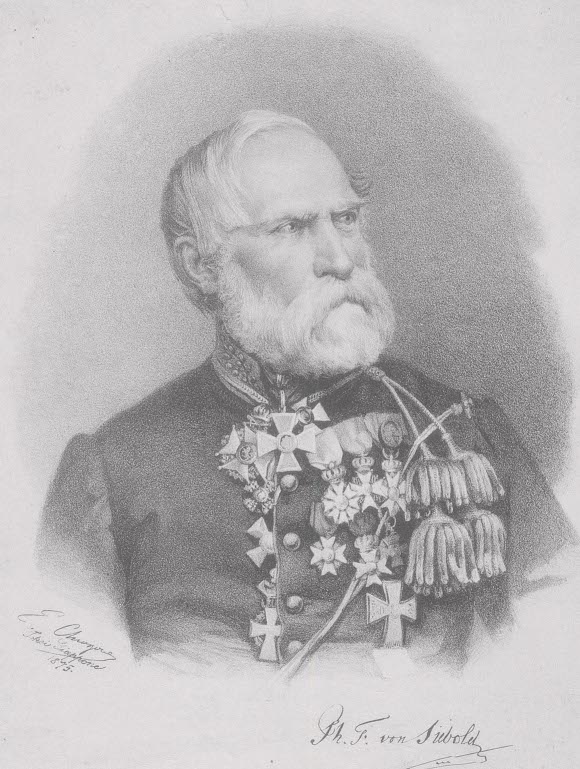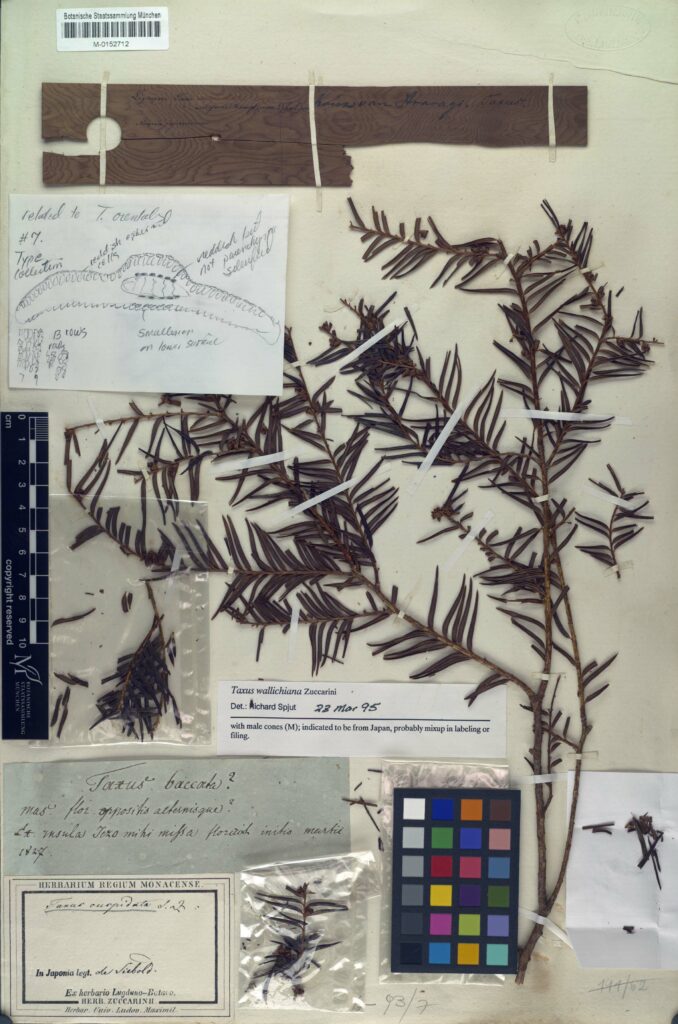Philipp Franz von Siebold
Philipp Franz von Siebold (1796–1866) was born into a family of well-known physicians in Würzburg (Germany). He studied medicine in Würzburg.
From an early age Philipp Franz von Siebold wanted to explore exotic countries. He therefore joined the Dutch East Indian Army as medical officer. After a short stay in Batavia (Java) he was sent to Japan. There he worked as a physician (1823–1829). Japan was a very secluded country during that period. Only the Dutch were allowed to trade with Japan, and Siebold was the only foreigner who got permission to do research in Japan during these years. In general, all foreigners had to stay on Deshima, a guarded artificial island in the bay of Nagasaki. Siebold was however allowed to leave this island on several occasions, and he cultivated numerous plants from various parts of Japan in his garden on Deshima. He introduced many techniques and methods of Western medicine and Western scientific knowledge to Japan. In 1829 he was expelled from Japan for the possession of documents declared illegal for foreigners (such as maps).
Von Siebold made extensive collections of ethnographical, zoological and botanical objects. He brought living plants from Japan to Europe and introduced many ornamental Japanese plants here (such as Akebia quinata, Lilium speciosum, Paeonia, Wisteria). He acquired ca. 12,000 dried plant specimens of 2,000 species, collected mostly by him and by his assistant H. Bürger (1804–1858). His collections of biological specimens and other objects from this first visit are mostly found in Leiden today, where he lived after his return. In Leiden there is the museum SieboldHuis dedicated to him.
Siebold stayed in Japan a second time from 1859 until 1862, but made few biological collections then. The ethnographical collections of this second trip were bought by the Bavarian State. Major parts are now deposited in the Staatliches Museum für Völkerkunde München today. Siebold died in Munich in 1866, and his grave is found in the cemetery Alter Südfriedhof München.
Siebold is still highly esteemed in Japan today, as a pioneer to link Japan to the Western World. His botanical collections are of outstanding importance for Japanese botany. Siebold was not a taxonomist himself, and so he assured the collaboration of competent colleagues to study his biological collections. The early botanical publications were written by J. G. Zuccarini (1797–1848) and authored as ‘Siebold & Zuccarini’, e.g. the Flora Japonica (1835–1841). Zuccarini was curator at the Botanische Staatssammlung München (M) at that time. The duplicate set of Siebold’s specimens studied by Zuccarini is therefore deposited here. It is probably the largest duplicate set outside of Leiden with ca. 3,000–4,000 specimens. Although it is considerably smaller than the Leiden set, the specimens in M are the ones studied by the responsible taxonomist (Zuccarini), and would therefore often be the preferable lectotypes.



